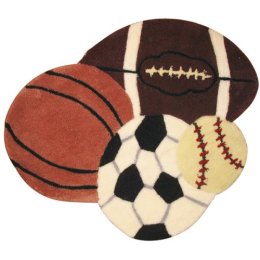
Sports
|
Popular Sports in Elizabethan Times |

Links: |
Do you ever wonder what it was like back in the Elizabethan times? Most people would think it was all about fun and games. Actually, a big part of it was. The Elizabethan era was from 1558 to 1603. Sports took place on a daily basis. There were a variety of sports played. Some were more gruesome than others. Some were played individually or by a team. One of the major blood sports was bearbaiting. It took place in London twice a week. In this, a bear (or sometimes an ape) would be tied up to a stake by a rope. A few dogs would be let into a pit where the bear was, simply to attack it. If the dogs killed the animal, then they would be the winners. However, if the dogs gave up, then they were considered losers. Bullbaiting was similar to bearbaiting, except with a bull. Also, cockfighting was considered a blood sport since a lot of blood was shed during this sport. Nowadays, most people would agree that these two sports were too cruel and gruesome (or inhumane) to do to innocent animals. Two more sports were fencing and hawking. Fencing was one of the most popular sports in the Elizabethan era. Sword fighting is a version of fencing. A major highlight of fencing was betting on the games. People would bet on how many times they thought a player would hit their opponent. In Hawking, men would catch a wild bird and then have to tame it. To do this, they would sew the bird’s eyes with a needle and thread and put the thread over the bird’s head so the man could open and close the hawk’s eyes at will. This way the trainer could train the hawk to hunt other birds. Hawking was considered the sport of royalty because only the King or Queen could afford to train these animals. During the Elizabethan Era, some sports were played that were very similar to today’s sports. One of them was colf, the ancestor of golf. In Dutch,”colf” means “club”, like a golf club. The colf balls were made out of bull hide stuffed with softened goose feathers. Colf and golf were played almost the same way but golf was with more modernized equipment. Another sport was hurling. Hurling was most like hockey today. The teams had 15-30 players per side. Each player had a wooden stick and there was one ball. The object was to hit the ball through the air into a goal. Finally, there was gameball. It was most like football. Gameball was very simple, but was even more extremely rough and violent than football. Lastly, jousting was another sport that was played regularly in the Elizabethan times. Jousting had to do with running at an opponent with a lance to try to knock him off his horse. Most of the time, the common folk were prohibited to play it because it was meant more for the rich. They could show off their expensive equipment, like their shields, clothes, armor, and animals. All in all, the sports that were played in the Elizabethan Era had many differences and similarities to modern day sports. From bearbaiting to jousting, there were many varieties also. So the next time you go to play a sport, just think about how people in the Elizabethan Era might have played a version of it long ago. 1.) What involved running at an opponent with a lance to kick him off his horse? 2.) Hawking (falconry) was the sport of what? 3.) What sport was for rich people? 4.) What two sports, considered inhumane, were active in London? 5.) Who were the winners of bearbaiting if the bear ended up dead? 6.) In fencing, what do you bet for? 7.) What is gameball? 8.) What sport is similar to hockey? 9.) What were the Colf balls made of? 10.) Which sports took place in London? How many times a week? 11.) In which sport was a bear tied to a stake by a rope? 12.) Why were dogs let in the pit for bearbaiting? http://www.springfield.k12.il.us/schools/springfield/eliz/sportsandentertainment.html http://www.tomecek.com/jay/RecreationandSports.html http://elizabethan-era.org.uk/elizabethan-sports.htm http://members.aol.com/stiltz12/ |